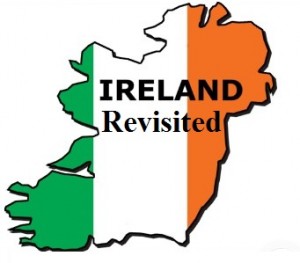Ireland Revisited: Part 20
Political dialogue through various back-channels was still in operation after the breakdown of the first Provisional IRA ceasefire. Church leaders acted as mediators between the republican and loyalist paramilitary factions and relayed their intentions and demands to the British and Irish governments respectively.
 The Northern Ireland community and the media could sense the significant opportunity for peace and remained optimistic. Despite this optimism, the Provisional IRA and loyalist paramilitaries continued their armed campaigns.
The Northern Ireland community and the media could sense the significant opportunity for peace and remained optimistic. Despite this optimism, the Provisional IRA and loyalist paramilitaries continued their armed campaigns.
The South Armagh Sniper, or ‘One Shot Paddy’ as he became known in republican circles throughout South Armagh, was carrying out a sniping campaign against British soldiers with more frequency. From 1990 until 1997, the sniper caused scores of deaths.
The Provisional IRA sniper was not a recent phenomena in militant republicanism however, as 1972 perfectly illustrated, when, in the bloodiest year of the Troubles, the majority of British soldiers killed were victims of PIRA snipers. From 1990 though, the republican snipers now had use of the powerful .50 BMG calibre Barrett M82 and the M90 long-range rifle, two costly weapons believed to be imported from Libya with the help of Colonel Gaddafi and from the United States through channels of American republican sympathizers.
‘One Shot Paddy’ despite media claims, was not the work of a single Provisional IRA man, but was carried out by two teams of four operatives, sometimes backed up by another 10-20 IRA men who scouted for targets and carried out reconnaissance.
The South Armagh area, which incorporated Forkhill, Drumintee, Crossmaglen, Whitecross and Cullyhanna, amongst others, was prime sniping ground due to the leafy green terrain which gave the PIRA men a cloak of invisibility to carry out most of their operations, away from army observation posts and other counter-terrorist methods.
By 1997 seven British soldiers and two RUC police officers had been killed. The snipers however, did come close to death too, when in 1993 a PIRA sniper, firing from the back of a car, came under heavy return fire from the British Army. The vehicle though, was fitted with armour plating and the sniper managed to escape injury or arrest.
Daniel Blinco, a British Guardsman, became the last soldier killed by snipers in South Armagh before the first Provisional IRA ceasefire of 1994. By this stage the sniper had gained notoriety, with many Irish tabloids labeling the sniper as ‘gold finger’ and ‘one shot Paddy’, which further fueled an air of mystery and an enigma around the PIRA sniper team.
After the breakdown of the 1994 ceasefire the sniper began the campaign again and on 12th February 1997 was responsible for the death of Lance Bombardier Stephen Restorick, who became the last British soldier to be killed by the South Armagh sniping team and the last of the Troubles, which itself was drawing to a bloodied close.
Gerry Adams, in an unprecedented move, described the Lance Bombardier’s death as “tragic” and wrote a letter of condolence to the victim’s mother. With the Troubles drawing to a bloodied close, the UVF split as a result of their ceasefire and the Loyalist Volunteer Force (LVF) was founded under the leadership of Billy Wright. Wright’s reputation preceded him and his notoriety would eventually cost him his life…
Short URL: https://newrytimes.com/?p=204













